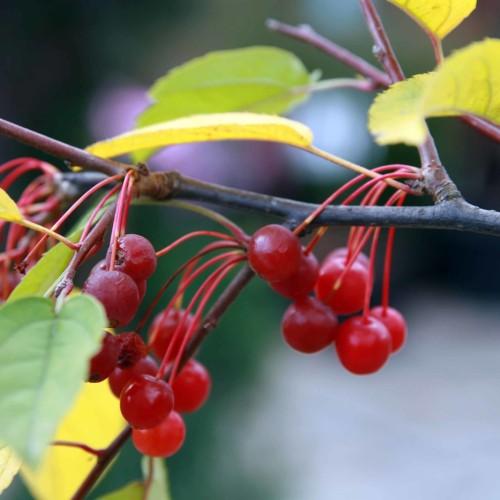
Sargent crabapple
Malus sargentii
Cycle:
Perennial
Watering:
Average
Hardiness Zone:
4 - 7
Flowers:
Flowers In Spring
Sun:
Full sun
Fruits:
Fruits Ready In Fall
Edible:
Yes
Leaf:
Yes
Growth Rate:
Low
Maintenance:
Low
Drought Tolerant:
Yes
Thorny:
Yes
Care Level:
Medium
watering
Sargent crabapple trees need to be watered deeply and infrequently when they are first planted to establish a strong root system. After that, they should receive an inch of water per week during the growing season. Their water needs can vary depending on conditions such as temperature, soil type, sun exposure, and level of rainfall. It is important to check the soil moisture 3-4 inches below the surface, and water when it is dry. Watering in the morning helps reduce moisture loss from evaporation due to the sun, and also gives the leaves time to dry before nightfall, reducing the risk of disease. Water should be directed at the base of the tree for optimal absorption. If possible, use soaker hoses or drip irrigation to minimize water wastage.
sunlight
The Sargent crabapple tree thrives in full sun and will perform best when given 6 to 8 hours of direct sunlight per day. It does well in part shade too, but will not produce as much foliage or blooms when grown in that environment. In terms of when, the Sargent crabapple should get full sun throughout the day in the spring and summer months, and some morning or late afternoon sun in the fall and winter months.
pruning
For the Sargent crabapple, pruning should be done twice a year: once in late winter and once in late summer. During late winter, prune any diseased or dead branches, as well as any crossing or rubbing branches. Also, shorten the upper branches of the tree to create an umbrella-shaped canopy. This will help increase air circulation and allow sunlight to reach all parts of the tree. During late summer, thin out growth by removing any upright shoots that sprout from the base or lower sections of the tree. Also, prune any water sprouts or suckers rising from the tree’s base. Lastly, selectively reduce the number of flowers and fruiting branches to give the tree more energy and produce larger fruits.
